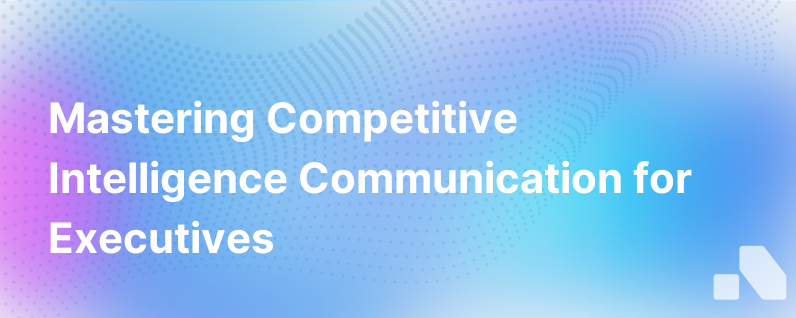Communicating Competitive Intelligence
Published on December 21, 2023 by David Zhang
As a B2B startup, staying ahead of the competition isn't just about creating an innovative product or service, it's about understanding the competitive landscape - the players in the game, their strategies, strengths, and weaknesses. This is the realm of Competitive Intelligence (CI), a critical function that informs strategic decision-making within a company.
However, gathering competitive intelligence isn't enough. It's also about communicating these insights effectively throughout your team, aligning everyone around the competitive realities your company faces. With Aomni's intelligence features, we've seen the impact of well-shared CI on sales, marketing, product development, and executive strategy. Here, we’ll explore strategies for communicating competitive intelligence effectively across your startup.
What is Competitive Intelligence?
Before we delve into the "how", it's important to understand the "what". Competitive Intelligence is the ethical gathering and analysis of competitor information to make informed business decisions. This includes understanding a competitor's strategy, products, market presence, strengths, and threats.
The Importance of Communicating Competitive Intelligence
Possessing CI is one thing, but effectively communicating these insights to your team is another. It ensures that everyone - from your intern to your CEO - understands the competitive landscape, thus creating an informed, focused, and aligned workforce. It drives strategic decisions, inspires innovation, and helps you anticipate and respond swiftly to market shifts.
The Core Principles of Effective CI Communication
Effectively communicating CI involves balancing relevance, timeliness, and clarity.
Relevance: Ensure the information you share is highly relevant to your team and their respective roles. This increases the likelihood of the data being utilized and reduces the risk of information overload.
Timeliness: Sharing CI should be timely. Old information can lead to outdated strategies, making agility and speed key.
Clarity: Complex data won't get you far. Translate your insights into understandable, straightforward language and visuals. This ensures that every team member, regardless of their industry knowledge or analytical skills, can comprehend the information.
How to Effectively Communicate Competitive Intelligence
-
Utilize Technology: Today's tech-driven world provides tools that can simplify, streamline and enhance CI communication. Consider using platforms like Slack for direct communication, Trello for project management, and Aomni for real-time CI updates.
-
Visualize Data: A well-designed infographic or chart can convey complex data in a digestible way, helping your team to understand and remember the insights.
-
Personalize Information: Not all CI is relevant to every team member, so be sure to tailor your communication to your audience. Sales teams need to know how your product stacks up against competitors, while your marketing team needs to understand competitor positioning and messaging.
-
Organize Regular Updates and Meetings: Regular touchpoints let your team know what has changed, and what hasn't, in your competitive landscape. Use a combination of daily briefings, weekly updates and quarterly deep-dives to deliver these insights.
-
Encourage Feedback and Discussion: Make your CI communication a two-way street, with open channels for team members to discuss insights, ask questions, and suggest actions in response to the competitor intelligence.
Tailoring CI Communication for Different Teams
Different functional teams within your startup will have different needs around CI, here are a few specifics:
Sales Teams: They need tactical CI, which may include product comparison charts, selling points and counterarguments against competing products.
Marketing Teams: They need strategic CI that can guide marketing strategies, inform messaging and positioning, and highlight opportunities for differentiation.
Product Development Teams: They need specialized CI involving technical specifications, patents, and roadmaps of competing products.
Executive Leadership: They require high-level CI that provides overall market analysis, competitor strategies, and threats and opportunities.
Conclusion
Competitive intelligence is a powerful asset for a B2B startup. However, without effective communication, these insights might never reach those who need them most or inspire the action needed to guide your startup to success.
Remember, the aim of communicating CI is to create an informed workforce capable of making sound, strategic decisions that differentiate your company from its competitors. As you master these strategies, you'll find that your entire company, across all teams, will begin moving with coordinated intent, ready to steer ahead of the competition. Try Aomni’s AI platform to amplify your competitive intelligence by consolidating real-time, relevant insights, and sharing them seamlessly across your organization.